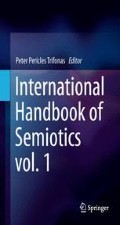Abstract
Music provides an arena for the exploration of semiotics and the meaning that individuals make of sign systems. In this chapter, I describe monk rehearsals, an activity that I used during my teaching experience, and provide a semiotic interpretation of the two texts that the rehearsal included—musical gesture and classroom management. In my analysis of the gestural signs within my rehearsal, I draw on Peirce’s (1893–1910) types of representamina (qualisigns, sinsigns, and legisigns), objects (icons, indexes, and symbols), and interpretants (rhemes, dicisigns, and arguments). The analysis indicates the insistent role of these two texts in a musical rehearsal, how they allow for communication, instruction, and the creation of music.
Access this chapter
Tax calculation will be finalised at checkout
Purchases are for personal use only
Notes
- 1.
I did not invent the use of monk rehearsals as an instructional strategy. I believe I found out about them through a discussion at a music conference in the 1980s.
- 2.
I learned this conducting convention in my choral conducting course with Edwin R. Fissinger (1920–1990) as an undergraduate at North Dakota State University.
References
Ben-Tal, O. 2012. Characterizing musical gestures. Musicae Scientiae 16(3):247–261. doi:10.1177/1029864912458847.
Burrows, D. 1990. Sounds, speech, and music. Amherst: The University of Massachusetts Press.
Cofer, R. S. 1998. Effects of conducting-gesture instruction on seventh-grade band students’ performance response to conducting emblems. Journal of Research in Music Education 46(3):360–373. doi:10.2307/3345548.
Danesi, M. 1998. Sign, thought, and culture. Toronto: Canadian Scholars’ Press.
Deely, J. 1990. Basics of Semiotics, Bloomington, IN: Indiana University Press.
Henrotte, G. A. 1992. Music and gesture: A semiotic inquiry. The American Journal of Semiotics 9(4):103–114. doi:10.5840/ajs19929410.
Mathers, A. 2009. The use of gestural modes to enhance expressive conducting at all levels of entering behavior through the use of illustrators, affect displays and regulators. International Journal of Music Education 27(2):143–153. doi:10.1177/0255761409102322.
Peirce, C. S. 1893–1910/1985. Logic as semiotic: The theory of signs. In Semiotics: An introductory anthology, ed. R. E. Innis, 1–23. Bloomington: Indiana University Press.
Poggi, I. 2011. Music and leadership: The choir conductor’s multimodal communication. In Integrating Gestures: The interdisciplinary nature of gesture, eds. G. Stam and M. Ishino, 341-354. Philadelphia, PA: John Benjamins North America.
Skadsem, J. A. 1997. Effect of conductor verbalization, dynamic markings, conductor gesture, and choir dynamic level on singers’ dynamic responses. Journal of Research on Music Education 45(4):509–520. doi:10.2307/3345419.
Vygotsky, L. S. 1978. Mind in society: The development of higher psychological processes. Cambridge: Harvard University Press.
Author information
Authors and Affiliations
Corresponding author
Editor information
Editors and Affiliations
Rights and permissions
Copyright information
© 2015 Springer Science+Business Media Dordrecht
About this chapter
Cite this chapter
Schuh, K. (2015). The Semiotics of “Monk” Rehearsals: A Weaving of Two Texts. In: Trifonas, P. (eds) International Handbook of Semiotics. Springer, Dordrecht. https://doi.org/10.1007/978-94-017-9404-6_11
Download citation
DOI: https://doi.org/10.1007/978-94-017-9404-6_11
Published:
Publisher Name: Springer, Dordrecht
Print ISBN: 978-94-017-9403-9
Online ISBN: 978-94-017-9404-6
eBook Packages: Humanities, Social Sciences and LawPhilosophy and Religion (R0)

